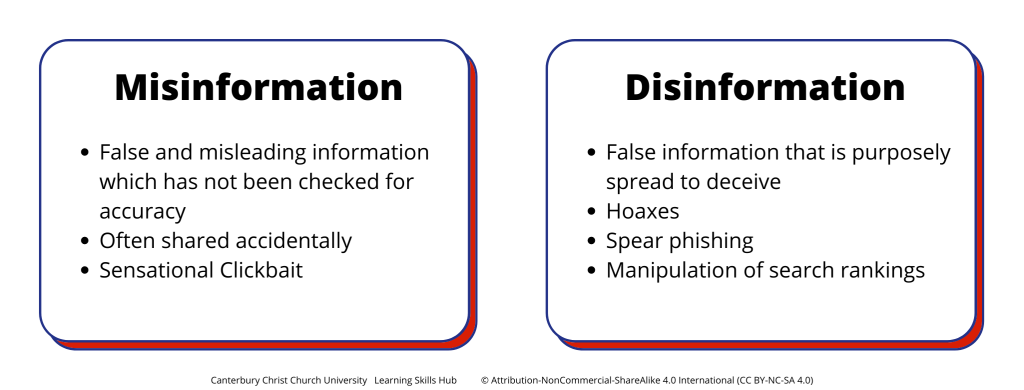Evaluating News Sources
In Level 0-4 you will have learned about evaluating sources [link back to it]. In this section you will learn how to evaluate news sources and spot fake news.
Fake News
Fake news mimics ordinary news in its style and content but is created without editorial control and is often misleading. It does not take a rigorous stance on fact-checking and can be designed to manipulate thoughts and feelings. It can take the form of:

Another term that is used is propaganda. Propaganda is a more systematic way of disseminating an ideology or doctrine. It is often biased and does not present both sides of an argument.
How to spot fake news
Checking the accuracy of your sources is important. This infographic will help you identify fake news, or you can watch this video to find out more
There are also websites that check news reports for accuracy, for example Channel 4’s Fact Check (UK) or The Annenberg Public Policy Center’s Fact Check (US).
 LearningSkillsHub
LearningSkillsHub